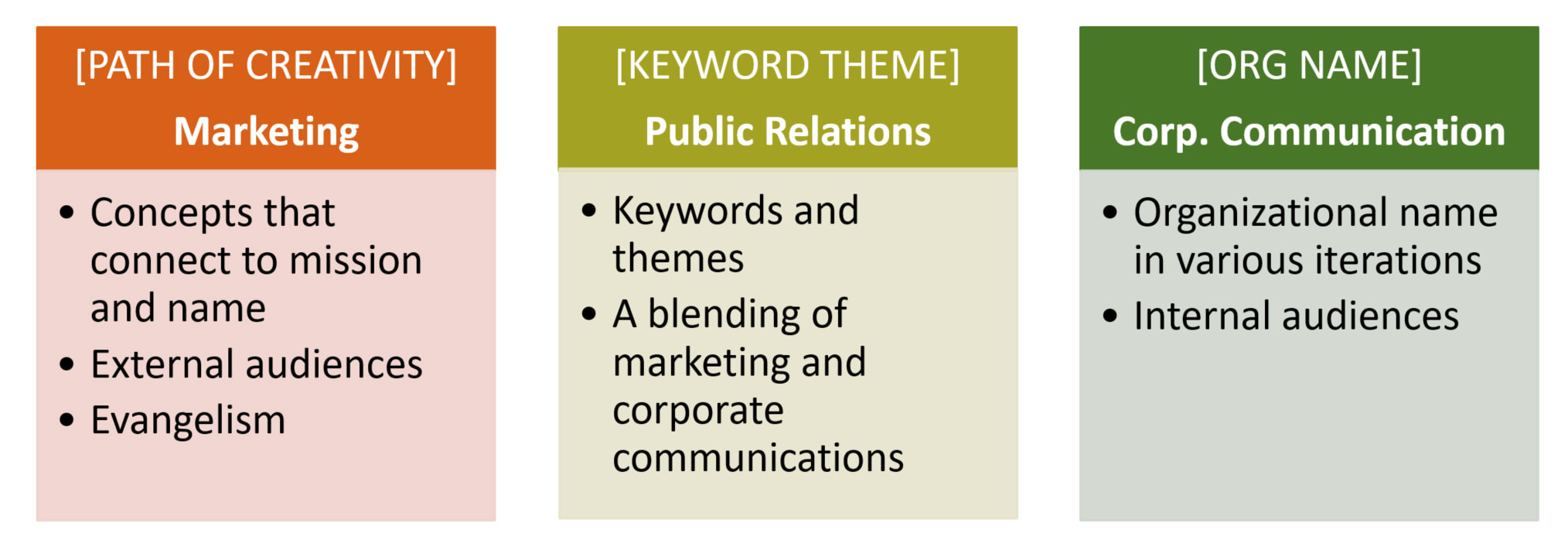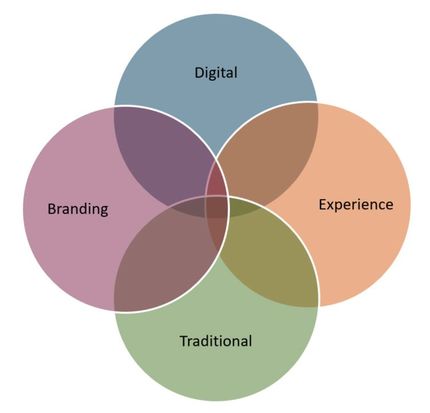Jamie Schneider DommDigital Strategist for the North American Division. The stakes of our gospel calling are too high; your church, conference, or ministry can no longer go without a digital brand strategy. It is imperative that we become just as effective as secular organizations at using digital media for communication and community building. Strategic planning is simply the process of being intentional and thoughtful with your digital communications. This process begins with one question: How do you want to be known? This is your brand. Branding is the process of revealing the most complete picture of an organization to its audience through perception, experience, and essence. Brands are communicated, not just created. A brand is based entirely on a customer’s experience. (Heidi Baumgartner) Components of your brand strategy should cover three areas: marketing, public relations, and corporate communication. Think of marketing as evangelism [OUTREACH] and corporate communications as internal or member focused [INREACH]. What can your church or ministry become known and recognized for? What is unique about what your organization has to offer the community? Your branding should:
Your brand strategy and digital strategy work together, and are part of an overarching grand communications strategy that includes traditional means of outreach and experience. Redeveloping your brand and/or your strategy takes a lot of behind-the-scenes homework. Involve people in your team throughout the process so they could share in ownership. This is especially important for choosing a handle or name for your social media profiles. Brand Basics: Brand: represented by its logo, its color, its type, its images, its designs, its tone of voice, its customer service Brand Strategy: defines the message and how to say it Brand guidelines: a system of managing the brand visually The biggest problem I see with ministries using social media is that they have no clear objectives. You must determine your purpose and shape your online communications and brand accordingly. Conduct a thorough branding audit. This process helps you to evaluate your communication and can help direct your rebranding. Define your communication purpose(s): for example, to advance the gospel and influence your community. Achieving your ultimate purpose(s) will take time. Develop an on-going approach |
Archives
August 2020
Categories
All
|
- Home
- BLOG
-
RESOURCES
-
RESOURCE MENU
>
- ADVENTIST IDENTITY GUIDELINES
- BIG DATA RESOURCES
- BRANDING, IMAGE & DESIGN RESOURCES
- CHURCH/MINISTRY SPECIFIC RESOURCES
- COPYRIGHT & TRADEMARK BASICS
- COURSES
- EMAIL RESOURCES
- GUIDANCE FOR HIRING SOCIAL MEDIA POSITIONS
- PODCASTS
- REPORTS & CASE STUDIES
- SOCIAL MEDIA RESOURCES
- (SOCIAL) VIDEO RESOURCES >
- TEXTING 4 CHURCHES
- TRACKING & ANALTYICS
- WATCH VIDEOS & TUTORIALS
- WEBSITE TIPS
- SOCIAL MEDIA GUIDELINES
-
RESOURCE MENU
>
- SEO
- Digital Discipleship & Evangelism
- COVID-19 RESOURCES
- eNEWSLETTER







 RSS Feed
RSS Feed